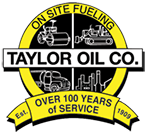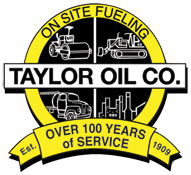Did You Know? Biodiesel Can be Used Year Round – With chilly fall temperatures now upon us, now’s the perfect time to begin preparing your fleet’s fuel for winter operations. One of the myths of wintertime fuel is that biodiesel cannot be used in cold weather. However, the truth is that biodiesel blends can be used year round, everywhere ultra-low sulfur diesel (ULSD) is used.
All diesel fuels need the proper maintenance to ensure optimal winter performance. Biodiesel is no different.
Explaining Cold Flow
Regardless of what fuel you use, it’s vital to make sure cold flow properties are adequate for your climate during winter. There are two important cold flow measurements necessary for standard No. 2 diesel fuel and biodiesel:
- Cloud point (CP): This is the temperature at which wax or gel crystals first show up in the fuel, giving it a cloudy or hazy appearance.
- Cold filter plugging point (CFPP): This is the temperature at which larger crystals form and begin to clog up the fuel filter. In general, CFPP indicates the lowest temperature for optimal vehicle operation. To guard against engine power loss, the CFPP must stay below wintertime low temperatures.
Cold flow properties for diesel fuel differ by crude oil source as well as the method of refining and blending. When it comes to biodiesel, feedstocks used in production can impact cold flow.
Regardless of what type of fuel you’re using, you must winterize it so it can stand up to brutal winter weather. Additives are helpful in lowering the CFPP and improving the flow of both diesel and biodiesel blends when temps dip below freezing. For best vehicle performance, you have to figure out what your additive needs are and apply them before your fuel hits the CP temperature.
Another approach to improving cold flow is to combine No. 1 diesel, or kerosene, with diesel or biodiesel blends. However, kerosene can reduce fuel economy, as it has a lower BTU value than diesel. Additives are less costly and work every bit as well as kerosene to boost winter performance. If you decide to use No. 1 diesel, place it into the tank first, then No. 2 on top, so you get a more efficient blend.
Keep Water Contamination at Bay
Are you a fuel supplier? You have to make sure your customers’ fuel tanks do not contain water or other contaminants as we head into winter. Water can cause plugging issues in diesel vehicles during winter, so when temperatures drop below freezing, make sure there is no excess water in the tank. It can freeze and block the fuel flow through the filter.
Water in the tank can also result in microbial growth and contamination, common in ultra-low sulfur diesel (USLD), which was introduced in 2006.
You can collect samples from the bottom of the tank, where free water and sediment tends to settle. The fuel samples you collect should be clear and bright. If they are hazy, the water is contaminated.
When water is present, take the proper steps to clean and remove it. Or, you could use a deicer to keep the water moving through the system during cold weather. It’s also a good idea to test for microbes and treat affected tanks with a biocide. If contamination is extreme, you will need to drain and clean the tank.
With proper maintenance, biodiesel fuel can be used year round. To learn more, contact Taylor Oil today.


